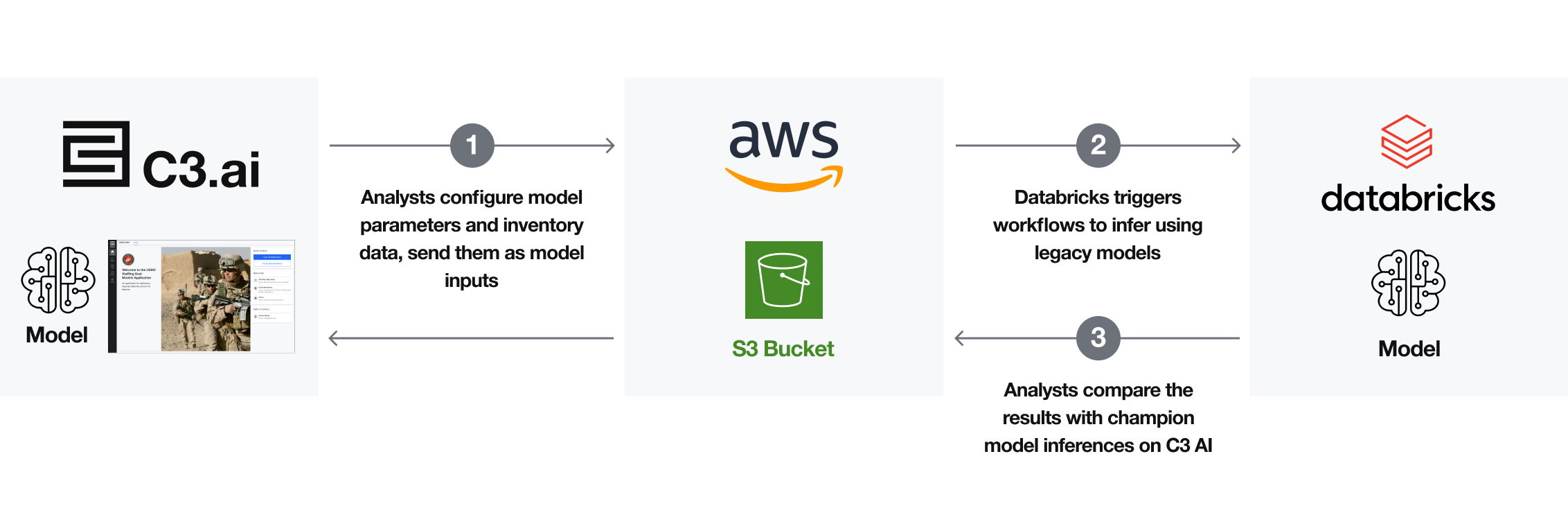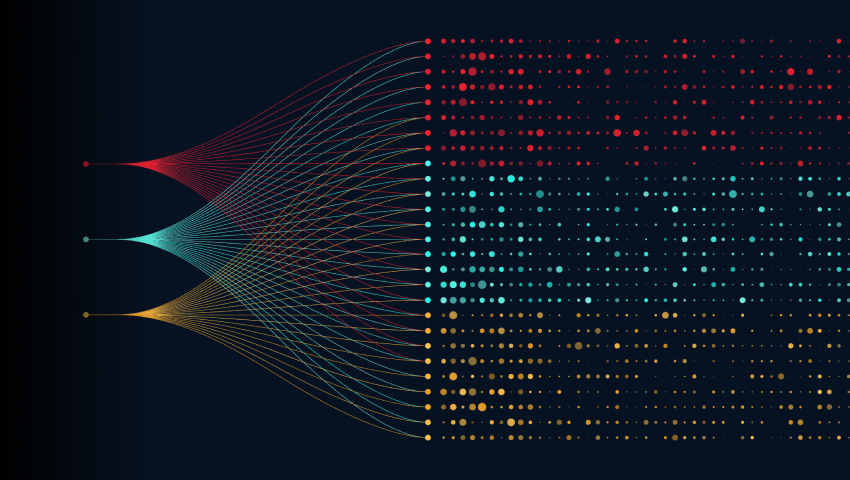The C3 AI Platform’s modular integration capabilities accelerated deployment and adoption
By Maneesh Lekkala, Lead AI Solution Architect, C3 AI and Zachary Esber, AI Solution Architect, C3 AI
Modern business needs are constantly changing, and any valuable enterprise technology must support those evolving demands. Designed to harness the tools in an enterprise’s existing technology stack, the C3 AI Platform provides powerful performance and intense flexibility with futureproofing so that organizations can focus on what they do best.
One example of how these features and capabilities are designed to accelerate deployment is the successful collaboration between C3 AI and the U.S. Marine Corps (USMC).
The Challenge: Manpower Optimization in the Modern Military
Manpower optimization within the U.S. Marine Corps is no easy task. The Marines are tasked with ensuring readiness for a diverse mission set — from combat operations to humanitarian aid.
This wide range of manpower optimization work requires a sophisticated approach to ensure the right personnel, with the right skills, are in the right place at the right time. However, traditional methods of managing and optimizing manpower are inadequate to meet the increasingly complex and data-driven demands of the modern military.
The USMC needed an advanced solution that could sift through vast amounts of data to provide actionable insights for workforce planning and operational readiness. This is where C3 AI rose to meet the challenge. Our goal was to enhance the branch’s decision-making abilities by leveraging AI and data analytics to align personnel with mission-critical needs.
Prior to C3 AI, the USMC’s Manpower Optimization team was going through their planning process once a quarter in a piecemeal fashion. A team of analysts would work the required input billets data through Databricks, curate and fuse the input data through some intra-team Excel rotations, make use of stand-alone Jupyter notebooks to run optimization models, and finally visualize the inference output using Qlik. This entire process was methodically prepared and executed over a month for a single model run, and as one can imagine, each re-work required a daunting series of steps to reach the end goal. Altogether, a cumbersome, time-consuming process.
Efficient Inference Saves Valuable Time
C3 AI approached the challenge of manpower optimization differently. Instead of isolating individually distinct tasks in different tools, C3 AI designed an application that incorporated all preprocessing and collaboration.
In six months, C3 AI built out a comprehensive application that connected to the source data, orchestrated the legacy Databricks model, enabled collaboration between stakeholders, and provided an end-to-end workflow to replace the month-long manual preprocessing steps. As a result of this effort, what used to be a month-long optimization process before can now be completed in a few hours, thanks to the C3 AI Platform.
In an effort to continue using the USMC’s legacy model, the C3 AI application directly triggers model runs and returns the inference output. C3 AI’s platform and its modular architecture helped quickly integrate with the USMC’s Delta Lake and design an application on the C3 AI Platform that allowed the USMC analysts to not only work up their inbound data through few screens but also visualize the inference results, all in one single interactive application. The USMC team is still able to run multiple iterations efficiently without consuming excessive man hours.
The USMC’s data scientists also benefit from C3 AI’s integrated Jupyter notebooks, which allow them to virtualize Databricks data as well as flat file data from various other departments and quickly glean insights as they plan for their quarterly workforce planning process. This provides the data scientists with the ability to experiment with various machine learning (ML) challenger models until they arrive at a champion model. This experimentation helps them evolve their process over time.

How the C3 AI Platform seamlessly interacts and integrates with and Databricks
How to Virtualize Existing Data Repositories Using Readily Available Connectors on the C3 AI Platform
When searching for AI solutions, many organizations look for platforms and applications that avoid data replication — and to accommodate these asks, the C3 AI Platform is equipped with various out-of-the-box connectors to external datastores that assist in virtualizing data.
The C3 AI Platform’s Databricks connector allows for simple virtualization and integration of external data sources at the application level. Users and developers can directly query Databricks data from the application development environment, or data can directly populate the application UI. After creating the external Type and setting up the connection to Databricks, data can be accessed in the same way as any other C3 AI Type.
By definition, the C3 AI Type is a complex object that the C3 AI system can interpret and understand, and is comprised of fields, methods, and annotations. Types represent the interface for interacting with and describing data, processing data, and machine learning. Types can be used to define the structure of persisted data, data processing tasks in the form of stream analytics or batch jobs, and machine learning classifiers.
The C3 AI Platform, with its modular architecture, can be leveraged to quickly bring interactive visualizations that add value. The clients benefit from fusing large data banks with trained models, catering inferences in useful visualizations, thereby putting applications on a shortened production timeline. Most of our engagements are productized within a few weeks, deriving incredible value and helping users to achieve better outcomes.
Easy Integration with Databricks
Let’s walk through the steps of using the Databricks connector to demonstrate how simple this integration process is:
Step 1: Define an External Type
## Define an External Type:
entity type SampleType mixes External, NoSystemCols schema name "externalDb.externalTable" {
id: ~ schema name "sourceID"
name: schema name "sourceName"
quantity: schema name "sourceQty"
lastModified: schema name "lastModified"
}
Step 2: Setup a Connection to the Databricks Cluster
## Setup a Connection to the Databricks Cluster:
## Databricks server
var serverHostName = "<server-hostname>";
## Databricks access token
var accessToken = "<token>";
## Databricks cluster httpPath
var httpEndPoint = "<http-path>";
creds = JdbcCredentials.fromServerEndpoint(serverHostName,
443,
DatastoreType.DATABRICKS,
"token",
accessToken
);
creds = creds.withField("properties", {"httpPath" : httpEndPoint});
JdbcStore.forName("ExternalDatabricks").setCredentials(creds, ConfigOverride.APP);
JdbcStore.forName("ExternalDatabricks").setExternal(ConfigOverride.APP);
Step 3: Map the External Type to the External System
{
"name" : "SampleType",
"source" : "SampleType",
"sourceSystem" : {
"type" : "SqlSourceSystem",
"name" : "ExternalDatabricks"
}
}
After creating the C3 AI Type and setting up the connection to Databricks, data can be accessed in the same way as any other platform Type. This allows for simple virtualization and integration of external data sources at the application level.
Step 4: Access Data via External Type
SampleType.fetch({include: 'name, quantity' order: 'descending(name)'})
A New Era of AI-Driven Optimization
Integrating existing data sources such as Databricks with the C3 AI Platform represents a significant leap forward in how organizations like the USMC manage their most critical resource: people. By harnessing the power of AI and data analytics, USMC is now able to model staffing goal requirements with unprecedented accuracy and efficiency, ensuring they are always ready for future missions. C3 AI has set a new standard for manpower modeling optimization for the military and can leverage the same capabilities for any organization.
Learn more about the C3 AI Platform and its vast set of capabilities.



